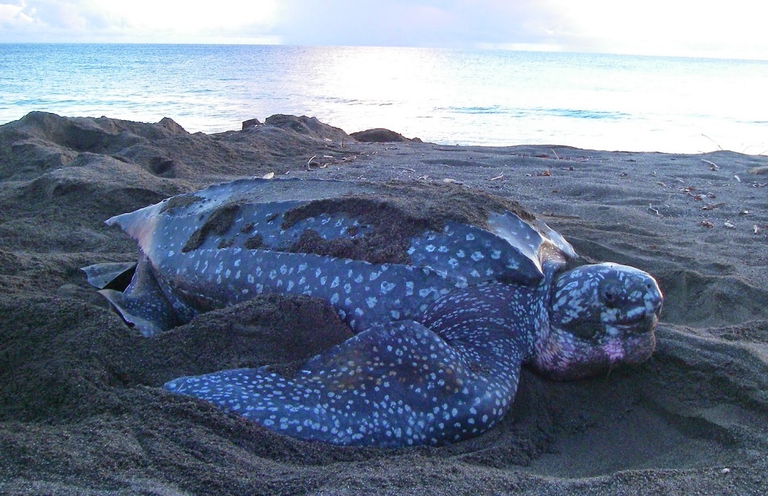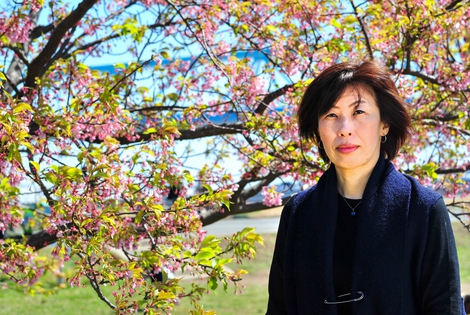
Three people putting the protection of the planet before themselves. Three powerful stories from Latin America, the deadliest region for environmental activists.
Winner of the Goldman Environmental Prize, Luis Jorge Rivera Herrera tells LifeGate about his battle to protect endangered leatherback turtles and the Puerto Rican coastline.
Luis Jorge Rivera Herrera is one of those humble heroes who rarely strike the public opinion, but whose work leaves a visible mark and helps protect the world heritage. Rivera Herrera, a Puerto Rican environmentalist, is one of the six winners of the Goldman Environmental Prize 2016, a sort of “Nobel for the environment”, the most prestigious prize that is awarded since 1990 to activists around the world who help protect nature.
Rivera Herrera led a popular campaign aimed to establish an important natural reserve where endangered leatherback sea turtles (Dermochelys coriacea) nest. The man has also successfully battled for seventeen years against the construction of a mega hotel resort in the protected area.
Many wonderful natural regions on Earth are threatened by overbuilding. How did you manage to fight the construction of a new big hotel resort in the area where the natural reserve was then established?
It was thanks to the perseverance with which we’ve fought our battle, which lasted seventeen years. We’ve had the good fortune of having available a large amount of data in the US Department of Fish and Wildlife as well as in the Puerto Rican Department of Environmental Resources (DNER) from the beginning. Already in 1992 the DNER, in collaboration with a local NGO, proposed to expand the boundaries of the nearby natural reserve in order to include most of the lands that are part of what is now known as the NEC, the Northeast Ecological Corridor. However, the Commonwealth rejected the proposal opting for the construction of two resorts in the designated area. On the basis of these scientific data we filed a lawsuit against the construction of buildings in the NEC. We defended the lawsuit from 2003 to 2011. In 2005 a Coalition for the NEC was established also thanks to the Sierra Club, which played a fundamental role in involving the communities that encouraged the approval of a bill that would have declared the area as protected. So, to sum up, we managed to create the reserve thanks to scientific and legal strategies.
Why did you start your battle to protect the Puerto Rican environment and biodiversity?
In Puerto Rico many environmental organisations fighting against industrialisation were founded in the ‘60s. The industrialisation process, occurred during the ‘50s, destroyed mangrove forests and wetlands, mostly in the coastal area. Petrochemical plants were built here, which contributed to worsen the conditions of many communities living on fishing, and restrict access to beaches. This rapid transformation, which reduced access to vital resources, convinced many Puerto Ricans to fight against the construction of these plants.
Which is the state of conservation of leatherback turtles? Which are the main threats they have to face and what can we do to protect them?
Fortunately, these reptiles can still be found in oceans all around the world. In the Northern Atlantic, leatherback turtles are listed as endangered species, even if their population has been recovering in the last ten years. Turtles are threatened by habitat loss, light pollution, industrial fishing and egg collection. Climate change is another serious threat to this species, as most of its nesting areas will be eroded and affected by rising sea levels. Increased global temperatures also alter the ratio between male and female baby turtles. Sex determination of sea turtles, as well as many other reptiles, depends on the sand temperature during the incubation period. If sand temperature is high, there will be more female turtles, on the contrary if it’s low, there will be more male turtles. Global warming will cause an exponential increase of female specimens, which will have potentially serious impacts on their population.
In your opinion is it possible to combine tourism and conservation? Can ecotourism be a threat for endangered species like leatherback turtles?
Certainly, these activities can be combined and reciprocally benefit from one another. The environmental impact of tourism has strongly increased in the last two decades along with the increase in visitors. It’s important to promote our natural resources as well as not to alter the balance between tourism and the protection of the environment. Organising visits where leatherback turtles nest can have a negative impact on the species, if necessary precautions aren’t followed to avoid disturbing female turtles when they’re laying the eggs.
Siamo anche su WhatsApp. Segui il canale ufficiale LifeGate per restare aggiornata, aggiornato sulle ultime notizie e sulle nostre attività.
![]()
Quest'opera è distribuita con Licenza Creative Commons Attribuzione - Non commerciale - Non opere derivate 4.0 Internazionale.
Three people putting the protection of the planet before themselves. Three powerful stories from Latin America, the deadliest region for environmental activists.
Influential scientist, activist and author Vandana Shiva fights to protect biological and cultural diversity, and against GMOs.
Kimiko Hirata has blocked 13 new coal plants in Japan, but she hasn’t done it alone. The 2021 Goldman Prize winner tells us about her movement.
The Goldman Environmental Prize, the “green Nobel Prize”, is awarded annually to extraordinary activists fighting for the well-being of the planet.
A group of experts in Tokyo suggested pouring radioactive water from Fukushima into the open sea. A marine biochemist explains the consequences of this absurd decision.
We talk to Shaama Sandooyea, activist and marine biologist from Mauritius onboard Greenpeace’s Arctic Sunrise ship in the heart of the Indian Ocean.
Arrested for supporting farmers. The alarming detention of Disha Ravi, a 22-year-old Indian activist at the fore of the Fridays for Future movement.
The decline in grey and humpback whales in the Pacific and Atlantic Oceans has been traced to food shortages caused by rising ocean temperatures.
Water defender Eugene Simonov’s mission is to protect rivers and their biodiversity along the borders of Russia, China and Mongolia.










